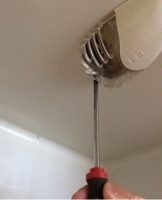Top 4 ways to increase battery heat transfer with your own hands
Heat transfer is the amount of heat a heater emits to the surrounding atmosphere. This parameter is taken into account when designing housing in such a way as to maintain a comfortable temperature inside the building in winter. However, over time, this indicator decreases, which makes people search for an answer to the question of how to increase the heat transfer of the battery.
Why battery heat dissipation decreases over time
The reasons for the decrease in heat transfer are often due to the design features of heating radiators. This parameter depends on:
- the type of material from which the radiator is made;
- the number of sections in the battery;
- the type of connection between the battery and the heating pipe;
- the speed of circulation of the liquid (coolant) in the battery;
- heating level of the heating agent.
This means that a decrease in heat transfer is often due to a decrease in coolant temperature or improper installation of the battery.
But if these factors are excluded, then this problem arises for the following reasons:
- clogging of radiators and heating pipes with rust, scale and other contaminants;
- the formation of air congestion in central heating communications;
- installation of a decorative casing on the battery;
- excessive contamination of the radiator;
- many coats of paint have been applied to the radiator.
Except for the first two reasons, the impact of the above factors leads to a slight decrease in heat transfer.
The main ways to increase heat transfer with your own hands
Methods applied to increase heat transfer give a temporary effect. If the reasons for the decline in this indicator are not eliminated, the situation will worsen over time. Therefore, to increase heat transfer, it is recommended to bleed the radiators. This method allows you to get rid of blockages and air pockets.
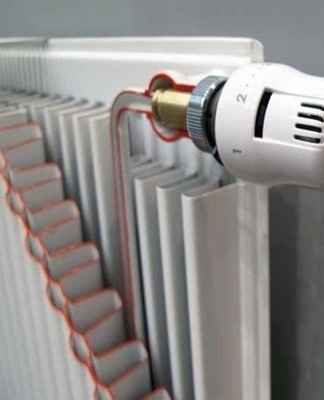
The batteries are purged using:
- hydraulic pressure;
- chemical solutions or sodium carbonate;
- pneumohydro-impulsive rinsing.
Bleeding of batteries connected to centralized heating is carried out by the appropriate organization. In this case, the supply of heat carriers is completely cut off, and the water is drained from the system.
Reflective screen
A reflective screen is the most common way to improve the efficiency of heaters. To make this device, you need to take a sheet of expanded polyethylene and cover the material on one side with foil. Such a screen should be larger than the radiator. This design is placed behind the battery with the leaf side facing the room.
It is recommended to install such screens before installing radiators. In this case, it is usually not sheet-covered polyethylene that is used, but a ribbed metal sheet. This option allows for better heat redistribution.
This method of improving battery efficiency has 2 drawbacks. It is believed that after the installation of the shield, the dew point is shifted. However, this aspect is influenced by many factors. But installing a reflective screen does not significantly shift the dew point.
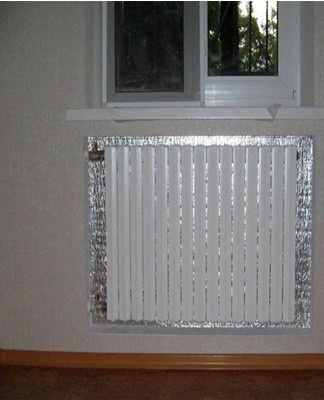
The installation of such shielding also makes it possible to reduce the consumption of heat which will heat the wall behind the battery. At the same time, in order for the effect of the installation of this screen to be noticeable, the radiator should not be covered with decorative overlays, curtains or the like.
Coloring
Painting the battery in a different color practically does not increase the ambient temperature. The difference between the indicators is mainly revealed with the help of special tools. However, despite the above, when the batteries are painted matte black, the heat transfer increases.
But it is not recommended to use this method to increase efficiency. This is due to the stated reason: it is impossible to notice the difference between the previous and current heat transfer after painting the battery. Before taking such drastic measures, it is recommended to use other methods to improve the efficiency of the radiator.
Instead of painting it black, just rinse the battery of contamination. A thick layer of dust accumulated on the surface of the radiator acts as a thermal insulator.It is also recommended to remove a thick layer of paint which absorbs some of the radiated heat.
The described procedures must be carried out before turning on the heater. This is because some types of paint do not adapt well to hot surfaces.
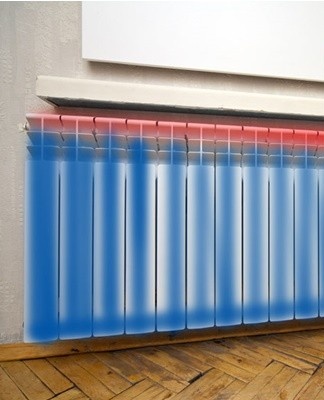
Special coverage
Special casings help to improve heat transfer in the apartment. Such designs increase the efficiency of heat radiation redistribution. This is because the cases are made of aluminum and other metals which increase heat transfer. In addition, this design covers the part of the battery that heats "unnecessary" areas.
Improve indoor air circulation
If the above reasons for the decrease in battery efficiency are eliminated, but the room is still cold, then this is due to increased heat loss. These occur due to:
- natural room ventilation;
- heated walls;
- insufficient thermal insulation of windows;
- the presence of joints between the walls;
- floor heating;
- heat the roof.
Therefore, in order to increase the temperature inside, it is necessary to carry out operations to reduce heat loss. To do this, you need to insulate the walls, floor and ceiling, as well as check the quality of the window insulation.
In addition, it is necessary to remove all objects covering the batteries. This applies in particular to curtains and furniture. Even such an operation will improve the circulation of heat in the room.
Additionally, a fan can be installed next to the radiator, the blades of which draw air to the room. Thanks to this solution, natural convection is improved, which leads to an increase in the interior temperature.However, this method creates some disadvantages related to the operation of the fan: the noise level in the room increases due to the rotating blades and the energy consumption increases. In this regard, it is recommended to install the device at an angle to the radiator and turn on the device for several hours.
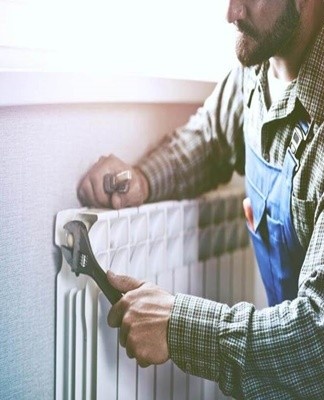
How to determine current heat transfer
To calculate the heat transfer, the following initial data is needed:
- coolant temperature;
- battery thermal conductivity coefficient (specified in the instructions);
- section area.
To get the heat transfer coefficient, you need to multiply the given indicators. In addition, this parameter is influenced by several factors. The latter include the method of connecting the battery to the heating system. The best option is the case when the supply pipe is connected from above, and the outlet pipe is on the other side, from below. With this method of connection, the heat loss due to this factor is reduced to zero.
You should also consider the type of material the battery is made from:
- Cast iron.The heat transfer of one section of these radiators is 50-60 watts at a coolant temperature of 80 degrees.
- Steel. The metal in combination with the special design of the radiators provides heat transfer by radiation and convection. This is possible due to the fact that steel fins are additionally welded to the heater. The latter act in this case as a convector. However, the steel cools quickly, so when the temperature of the coolant drops, the temperature in the part drops sharply.
- Aluminum.The heat transfer of a section of radiators made of this metal reaches 200 watts. However, aluminum batteries are rarely used. This is due to the fact that the metal becomes covered with rust by constant contact with contaminated water.
The most effective are bimetallic heaters. But these products are more expensive than others.



